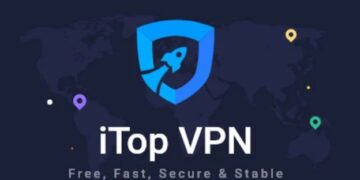As science and technology move quickly, the gadgets you use every day, such your Android smartphone, tablet, or OSX laptop, are a big part of your job. You may be looking at data sets, using lab dashboards, working together on methods, or just looking over the newest discoveries. Behind all this is a network path your device takes—and one often overlooked layer of protection can make a meaningful difference.
One effective option to secure yourself is to use a service like VPNLY, which provides you a free encrypted connection. A free VPN for OSX or Android creates a secure tunnel for your device’s data to go over. Nobody other will be able to see or follow your every move as easily. It gets more difficult to determine where data came from when you utilize your mobile device to study presentation materials, go at paper versions, or confirm instrument readings. Each one requires an extra step.
Why Device Safety Comes First
As researchers, engineers or tech professionals frequently shifting between Android and OSX devices, the continuity of your workflow demands consistent protection. When you open a dataset on your laptop, later switch to your tablet for visualisation, then revisit the project on your smartphone—you essentially span multiple endpoints. Each connection reveals metadata, device signatures and timing that can build up to a digital profile of your activity. By activating a VPN for Android and OSX that works across devices, you reduce the footprint your equipment leaves behind. Your browsing, data access and collaborative sessions become more private and less readily tracked.
What to Expect from a Free Encryption Layer
When you activate the free version of a VPN, here’s what you gain—and what to understand about its boundaries:
Benefits you receive:
- Encryption of your data from your device (Android or OSX) to the endpoint, making your transmissions harder to decipher.
- It would appear that hiding your device’s network name makes it less susceptible to network hacking.
- On a tablet, an Android phone, or an OS X laptop, your security is guaranteed.
Limitations to acknowledge:
- Free tiers often come with fewer server locations, bandwidth limits or slower performance during peak use.
- Advanced features like automatic traffic shutdown if the secure path drops might be omitted.
- Basic safety practices like creating secure passwords, updating your software, and being cautious when installing apps are not replaced by this additional layer of protection.
Integrating Protection into Your Research Workflow
When your work involves switching between devices—Android for field updates, tablet for quick visualisations, OSX laptop for full analysis—building a routine around device protection is practical. Before you open your tablet to review a protocol, toggle your VPN; when you plug in your laptop for data modelling, keep that tunnel active. The result: each device shares the same safety matrix. A VPN that works for Android and OSX means you don’t buy separate tools for each environment—just a unified layer across your hardware ecosystem.
Elevating Your Digital Hygiene
In a technical environment where lab notebooks are digital, results are shared online and collaboration spans continents, your device transitions matter. The protective layer of a free VPN bolsters your baseline security posture—it works quietly behind your applications, your dashboards and your tools. Your Android, your tablet, your OSX device all participate in the same safeguarded session. When your connection becomes just another part of your workflow—protected, consistent, comprehensible—you’re less exposed and better positioned to focus on the science not the security.













